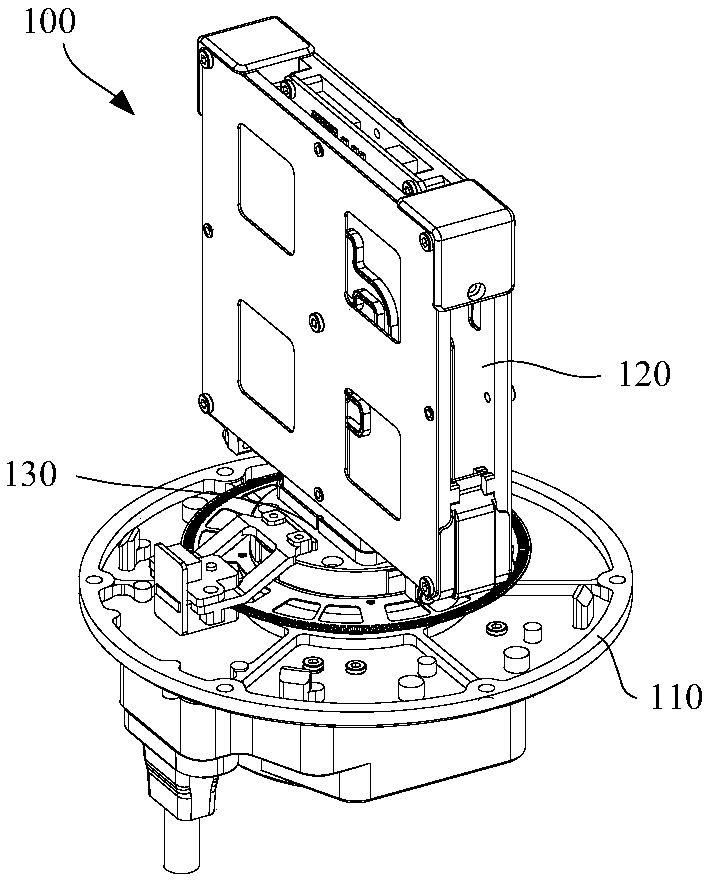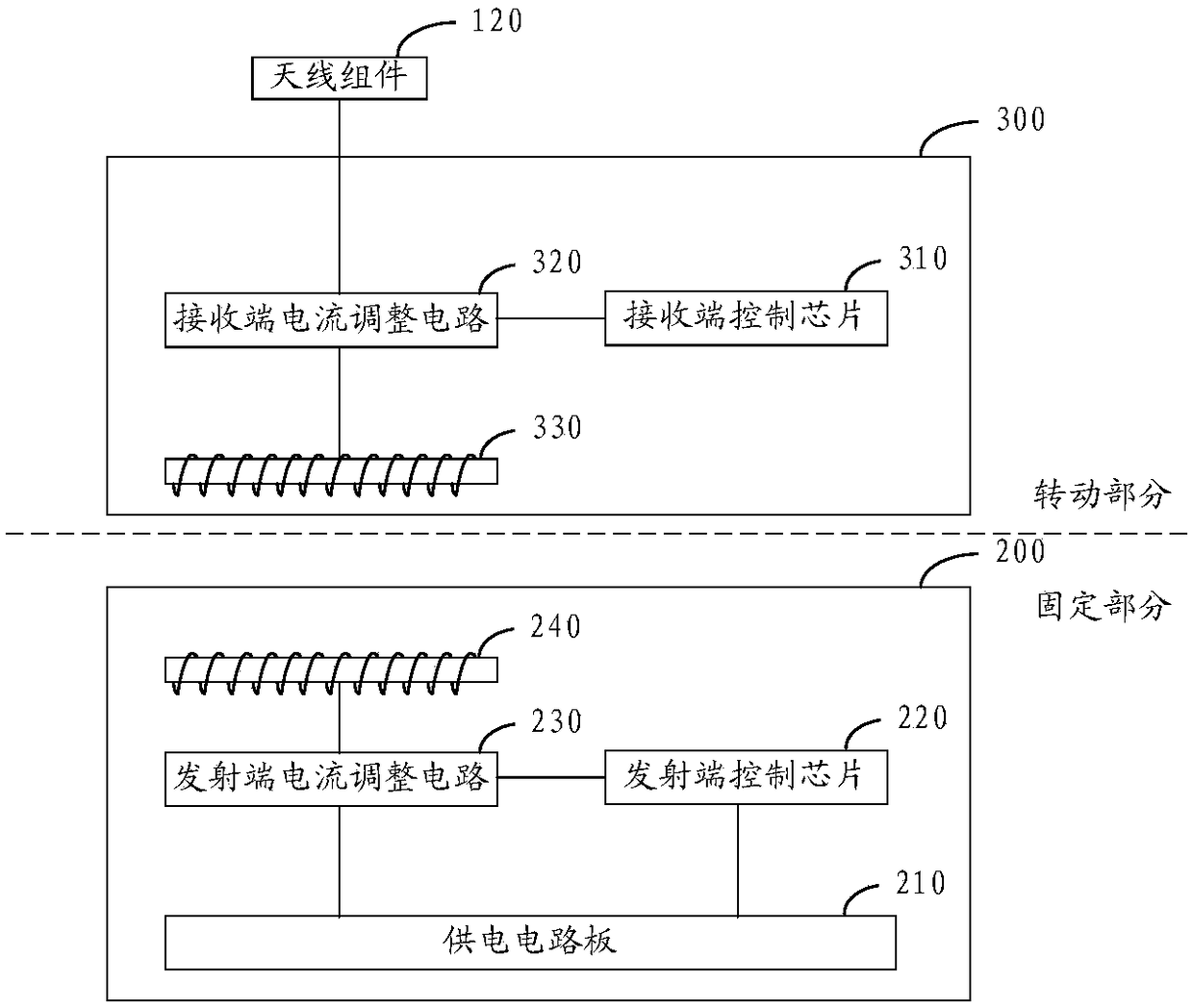Radar device, wireless rotating device for a radar and unmanned aerial vehicle
A radar device and unmanned aerial vehicle technology, applied in the field of radar, can solve the problems that the 360° omnidirectional rotation of the antenna assembly cannot be realized, and the rotation angle of the driving mechanism is limited.
- Summary
- Abstract
- Description
- Claims
- Application Information
AI Technical Summary
Problems solved by technology
Method used
Image
Examples
Embodiment 1
[0017] See figure 1 and figure 2 , are respectively a structural schematic diagram and a cross-sectional view of a radar device 100 provided in the embodiment of the present application, such as figure 1 and figure 2 As shown, the radar device 100 includes a base 110 , an antenna assembly 120 , an antenna bracket 140 for supporting the antenna assembly 120 , a motor 130 , and a power transmitting component 200 and a power receiving component 300 .
[0018] Among them, such as figure 1 As shown, the antenna assembly 120 is arranged on the base 110, and it can rotate around a rotation axis relative to the base 110. It should be noted that the rotation axis can be a real axis or an imaginary axis. When the rotation axis is a real axis, the antenna assembly 120 can rotate relative to the rotating shaft, or the antenna assembly 120 can rotate together with the rotating shaft. The motor 130 is disposed on the base 110 , which may include a rotor 131 connected to the antenna as...
Embodiment 2
[0050]The radar wireless rotating device provided in the embodiment of the present application may include: a base, an antenna component, a power transmitting component, and a power receiving component. Wherein, the antenna component can be arranged on the base, and can rotate around a rotating shaft relative to the base, the electric energy transmitting component can be used to convert electric energy into electromagnetic energy, and emit the electromagnetic energy, and the electric energy receiving component, and The antenna assembly is electrically connected and rotatable with the antenna assembly, and can be used to convert received electromagnetic energy into electrical energy and transmit the converted electrical energy to the antenna assembly. The specific structure, working principle, working process, and realized working effect of the wireless rotating device of the radar may be similar to the radar device described in the first embodiment above, and will not be repeat...
Embodiment 3
[0054] See Figure 5 , is an unmanned aerial vehicle provided in the embodiment of the present application. The unmanned aerial vehicle may include a housing 610 and a radar device 620, wherein the radar device 620 may be arranged on the housing 610, and its antenna assembly ( Figure 5 not shown) can communicate with the UAV's control system ( Figure 5 Not shown in ), to establish a communication connection between the obstacle information detected by the antenna assembly to be sent to the control system, and the control system can control the flight of the UAV according to the received obstacle information to realize the flight Avoidance.
[0055] For the specific structure, working principle, working process and working effect of the radar device 620, reference may be made to the related description in the above-mentioned first embodiment, and details will not be repeated here.
[0056] As follows, further Figure 5 The example drone is shown for illustration. See Fi...
PUM
 Login to View More
Login to View More Abstract
Description
Claims
Application Information
 Login to View More
Login to View More - R&D
- Intellectual Property
- Life Sciences
- Materials
- Tech Scout
- Unparalleled Data Quality
- Higher Quality Content
- 60% Fewer Hallucinations
Browse by: Latest US Patents, China's latest patents, Technical Efficacy Thesaurus, Application Domain, Technology Topic, Popular Technical Reports.
© 2025 PatSnap. All rights reserved.Legal|Privacy policy|Modern Slavery Act Transparency Statement|Sitemap|About US| Contact US: help@patsnap.com



